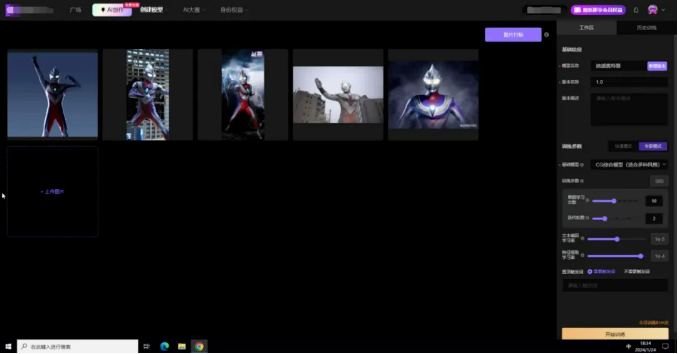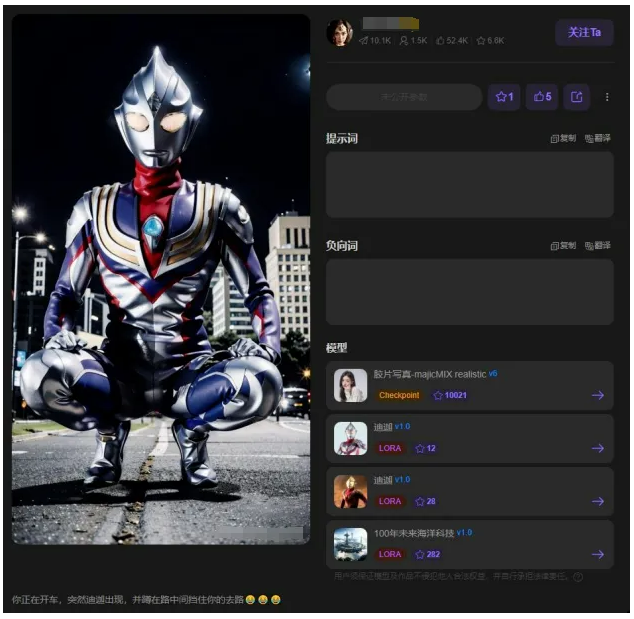With the rise of AIGC technology, the traditional theory structure of intellectual property has been hit hard. From copyright eligibility or attribution, to confirmation of platform liability, many issues involved in the practice of AIGC need to be resolved. Recently, an AIGC case concerning the famous IP “Ultraman” was decided by the Hangzhou Internet Court, which clarified the platform liability of the platforms in such disputes, and is of some significance in guiding the conclusion of similar cases in the future.
Basic Case:
The plaintiff, a Shanghai cultural development company, owned the exclusive authorization of the copyright of the Ultraman series of works, and the defendant, a Hangzhou intelligent technology company operated a platform where users could upload images to train AI models and share the AI model of Ultraman by uploading pictures, etc., and could then use the AI model of Ultraman to generate works that constituted a substantial resemblance to the image of the plaintiff's Ultraman images. After noticing the suspected infringement, in February 2024, the plaintiff filed a lawsuit in the Hangzhou Internet Court, seeking to stop the infringement and demand compensation for damages.

Photo: Users are conducting LoRA model training through this AI platform
Source: Hangzhou Internet Court official WeChat

Photo: Users have generated infringing images through this AI platform
Source: Hangzhou Internet Court official WeChat
Controversy 1: Whether the defendant in this case constitutes infringement?
According to the evidence submitted, the plaintiff claimed that the accused infringing picture in the case of Ultraman works based on the text of the prompt input to make some simple modifications, mainly to make the background content in accordance with the instructions of the prompt word presentation, and the alleged infringing content shares a high degree of similarity with the original Ultraman character in image, color scheme, clothing details, etc., constituting a substantial similarity as a whole.
However, combined with the characteristics of the platform involved in this case, the determination of its infringement liability is not that simple.
AIGC usually operates in four important stages, namely data input, data training, content output, and content use. The current common analysis of the copyright infringement controversy of AI in academia is to merge the four stages together for discussion, it is believed that the model cannot generate meaningful results without data training, thus there is a causal relationship in between, which in turn can be merged into an overall evaluation of a legal act. Therefore, a judgment of infringement at any stage can affect the overall case.
In the first instance judgment, Hangzhou Internet Court determined that although the defendant provided generative artificial intelligence services, the infringing training materials were uploaded by the users at the data input end, and the infringing models and infringing pictures were also decided to be released or shared by the users after having been generated at the content output stage. There was no evidence to prove the existence of joint infringement between the defendant and the user, for the defendant did not directly implement the behaviors that were controlled by the right to communication.
Nevertheless, it was found that before the case filed, there were several Ultraman LoRA models in the “superimposed model LoRA” section of the defendant platform, which users could choose by themselves, and after superimposed use of the model, the defendant’s AI platform could stably output pictures with the characteristics of Ultraman's character image.
The first Instance judge held that due to the convenience of technology, the images and LoRA models generated and published by users can be used repeatedly by other users, and the trend of the consequences of infringement proliferation has been quite obvious. The defendant should have assumed a higher duty of care in relation to the generation of the infringing content in question and should have foreseen the possibility of infringement.
Therefore, taking into account the nature of the AIGC service provided by the defendant, the level of development of AI technology, the profit model of the platform, and the reasonable measures to prevent infringement, the Court of First Instance concluded that the defendant should have known that the network users’ infringement act and did not take adequate and necessary measures to prevent.
Consequently, the defendant had failed to exercise reasonable care and was subjectively at fault, which constituted contributory infringement of the right of communication. This rule was affirmed in the second trial.
Controversy 2: Does the defendant's behavior in this case constitute an act of unfair competition?
After the judgment of the first instance, the plaintiff argued that, in addition to the infringing pictures identified in the first instance, there were also a large number of models and works on the platform in question that had some similarities with Ultraman image but far from substantial, and that the anti-unfair competition law should be applied to regulate such models and works that were difficult to get protection from copyright law, thus appealed to the second instance court Hangzhou Intermediate Court in October 2024.
To address this issue, the Court of First Instance made the corresponding judgement by evaluating the legality and legitimacy of the Defendant's business model and mode of operation as a breakthrough. From the perspective of the defendant's business model and operation method itself, it aimed to expand the application scenarios and functions of AIGC to better serve the users' creativity, which was in line with the requirement of free competition of “prioritizing efficiency”, and did not violate the principle of honesty and credit and business ethics.
In terms of the impact on the interests of consumers, copyright holders and the public, as the technology in question itself is neutral, infringement could be avoided if the users create works in accordance with the platform service agreement, besides, even though the new works generated under this new business model and mode of operation may have a certain impact on the prior works, such impact is not characterized by unreasonably jeopardizing the competitive rights and interests of other subjects and the rights and interests of consumers, and is in line with the requirements of fair competition.
The Court of Second Instance also affirmed the view of the Court of First Instance on this issue.
Comment